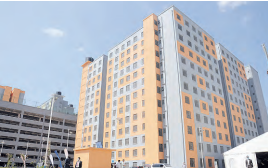

The drop in homeownership hype coupled with slow credit growth has seen a 14 per cent year-on-year drop in house prices, according to fresh Kenya Bankers Association data.
Prices in Kenya’s housing market continued to decline towards the end of 2024, creating opportunities for potential homeowners while signalling challenges for real estate developers.
The latest Kenya Bankers Association Housing Price Index (KBA-HPI) shows that house prices dropped by 1.1 per cent in the third quarter of 2024 compared to the previous quarter and fell 14.28 per cent year-on-year.
KBA Research director, Samuel Tiriongo, said the slowdown in prices reflects a shift in the market dynamics.
“We are seeing a correction in prices due to reduced speculative buying and changing financing conditions,” he said.
He said banks have started adjusting their lending policies to support homebuyers, which could stimulate demand in coming months.
In the period under review, credit to the real estate sector grew slightly by 2.36per cent, but lending to the construction sector dropped by 13.47 per cent, reflecting caution among banks.
The report shows that, there is regional shift in activities on account of demand and affordability concerns.
Housing activity in the low-market segment declined to account for 45.3 per cent of transactions during the third quarter of 2024 from 48.1 percent in the previous quarter.
Likewise, activity in the mid-market segment saw a decline from 18.3 per cent in the second quarter of 2024 to 17.5 per cent in the quarter under review.
However, the high-market segment registered a significant increase in activity from 33.7 per cent in the second quarter of 2024 to 37.2 per cent of all transactions in the third quarter of 2024.
KBA says that as homeownership becomes more accessible, policymakers are expected to focus on ensuring financing remains available, especially for low-income earners who have traditionally been locked out of the mortgage market.









